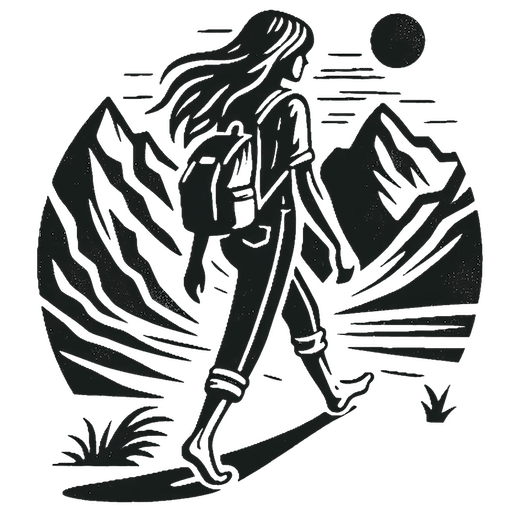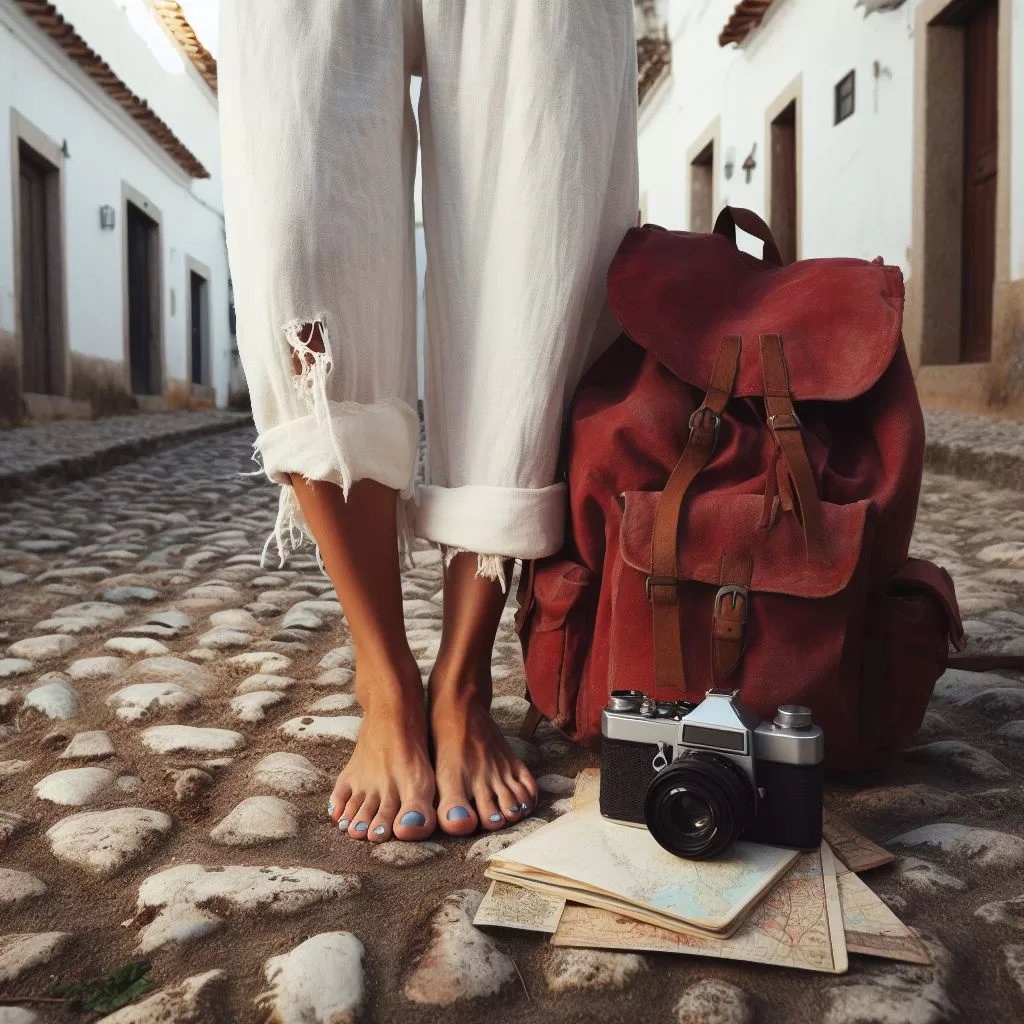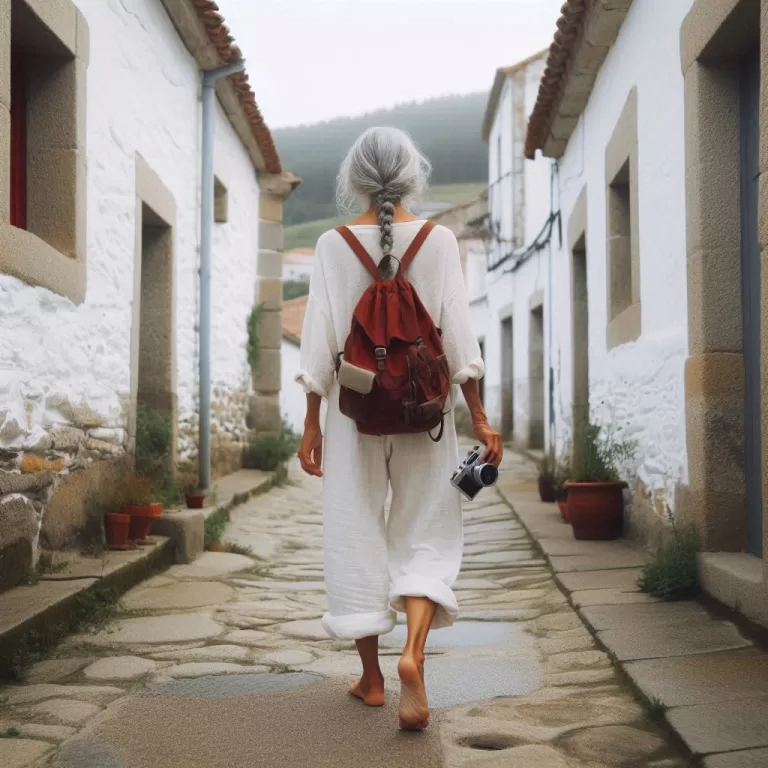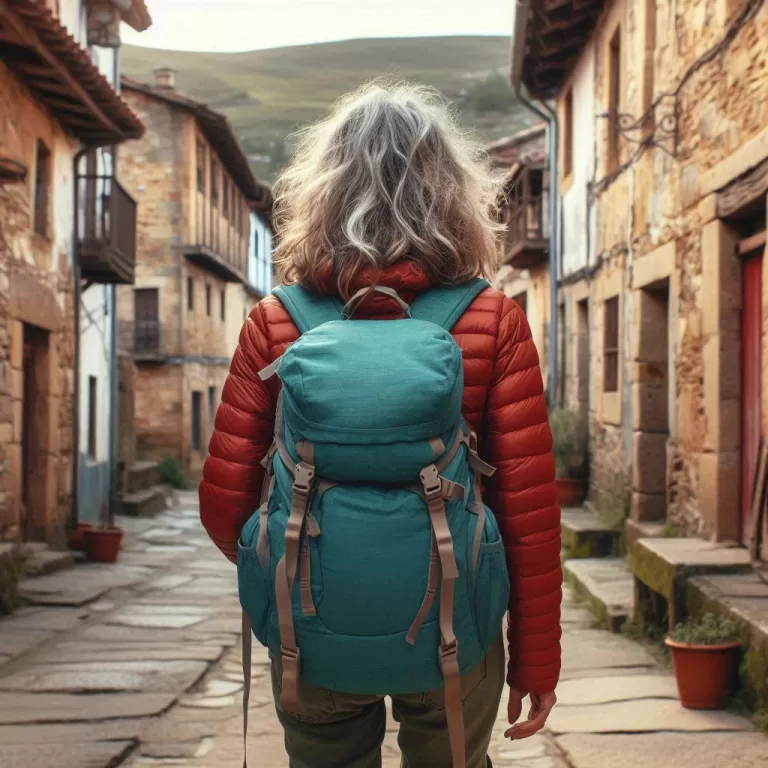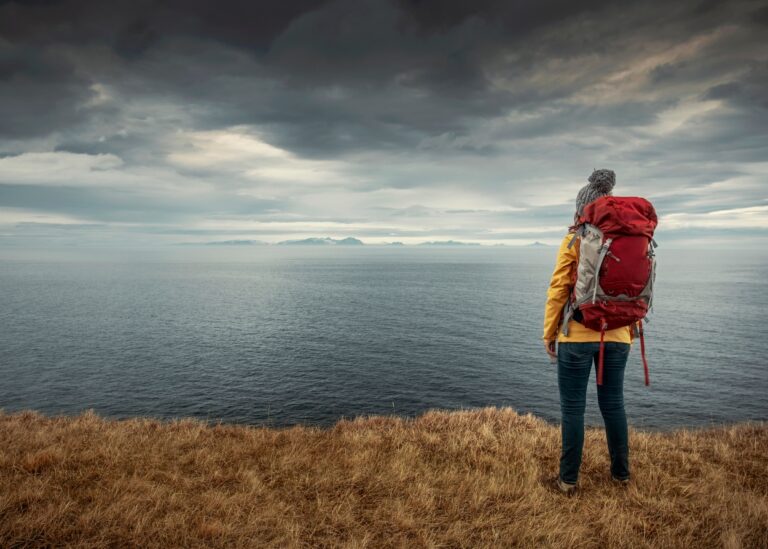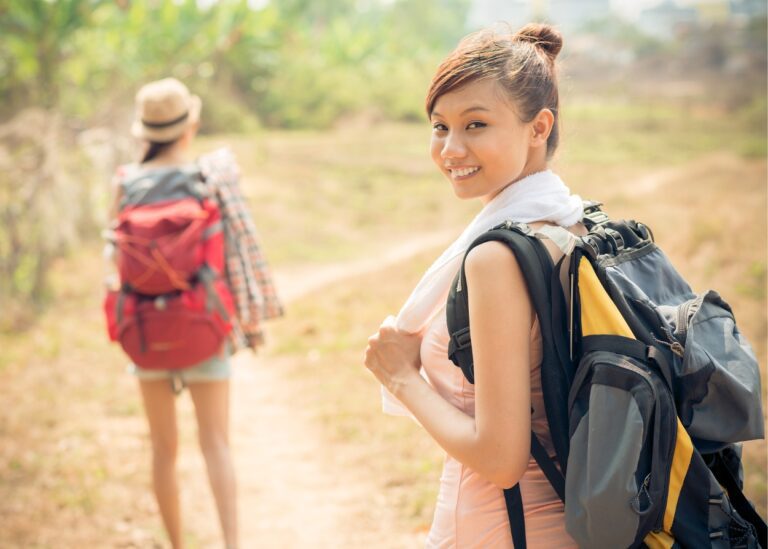Barefoot Backpacking in Europe
“Barefoot” Backpacking in Europe: Embracing Minimalism and Natural Movement
Table of Contents
- “Barefoot” Backpacking in Europe: Embracing Minimalism and Natural Movement
- The Science and Health Benefits of Barefoot Walking
- Grounding and Connection to Nature
- Exploring Barefoot Footwear Options
- Transitioning to Barefoot Footwear
- Years of Traveling with Minimalist Footwear
- Minimalist Packing Plan for Backpacking Europe
- Footwear Strategy
- Best European Countries for Minimalist Backpacking
- Embracing Minimalism Beyond Footwear
In recent years, a growing number of travelers have discovered the liberating experience of “barefoot” backpacking through Europe. This approach combines the freedom of minimalist footwear with the simplicity of lightweight travel, offering a unique way to explore the continent. By adopting barefoot shoes and sandals, backpackers not only lighten their load but also potentially improve their health and connection to the environment. This article delves into the science behind barefoot walking, explores various minimalist footwear options, and provides a comprehensive guide to packing light for European adventures.
The Science and Health Benefits of Barefoot Walking
The Natural Movement Advantage
Barefoot shoes and sandals are designed to mimic the natural function and movement of the human foot. Unlike traditional footwear with thick, cushioned soles and narrow toe boxes, minimalist options allow the foot to move as nature intended. Zero-drop soles, which have no height difference between the heel and toe, promote a more natural gait and posture. Wide toe boxes enable the toes to splay naturally, enhancing balance and stability.
Health Benefits
Research suggests that barefoot-style walking can lead to numerous health benefits:
- Improved Posture and Balance: By allowing the feet to sense the ground directly, barefoot walking can enhance proprioception – the body’s ability to sense its position in space.
- Strengthened Foot Muscles: Without the artificial support of traditional shoes, the intrinsic muscles of the feet are engaged more fully, potentially reducing the risk of common foot problems like plantar fasciitis and bunions.
- Enhanced Gait Mechanics: Studies have shown that barefoot running and walking can lead to a more efficient gait, reducing impact forces on joints.
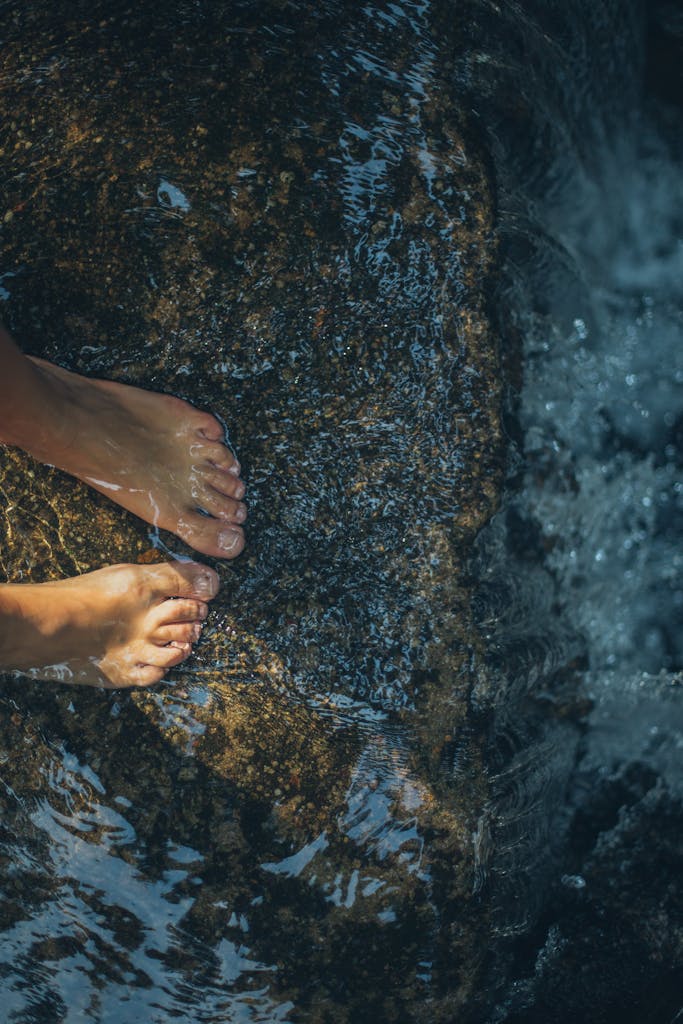
Grounding and Connection to Nature
The concept of “grounding” or “earthing” suggests that direct contact with the earth’s surface can have positive effects on health. While more research is needed, some studies indicate potential benefits such as reduced inflammation and improved sleep quality. For backpackers, this connection to the earth can also enhance the sensory experience of travel, allowing for a deeper appreciation of diverse terrains and landscapes.
Exploring Barefoot Footwear Options
Barefoot Sandals
Barefoot sandals offer the closest experience to true barefoot walking while providing protection from rough surfaces. Key features include:
- Zero-drop soles for natural foot positioning
- Minimal padding to allow for ground feel
- Secure straps for stability during movement
Popular styles include huaraches, inspired by traditional Mexican running sandals, and Earthrunners minimalist hiking/running sandals designed for more rugged terrain. These options are ideal for summer travel, beach walks, and urban exploration.
Barefoot Shoes
For cooler weather or more formal settings, barefoot shoes offer protection while maintaining the benefits of minimalist footwear. Characteristics include:
- Thin, flexible soles for ground sensitivity
- Wide toe boxes to allow natural toe splay
- Lightweight, breathable materials
Many brands now offer barefoot shoes suitable for various activities, from city walks to light hiking, like the inexpensive Whiten from Amazon. Their versatility makes them an excellent choice for travelers looking to pack light without sacrificing comfort or style.
Transitioning to Barefoot Footwear
It’s crucial to transition gradually to barefoot-style walking to avoid injury. Muscles and tendons accustomed to traditional shoes need time to adapt to the increased demands of minimalist footwear. Start with short periods of wear and gradually increase duration over several weeks or months.
Years of Traveling with Minimalist Footwear
Many long-term travelers have embraced minimalist footwear for its simplicity and comfort. Anecdotal reports highlight the durability of quality barefoot shoes and sandals, even when subjected to the varied terrains of European travel. Backpackers often note reduced fatigue and increased enjoyment of their surroundings when using minimalist footwear.
Minimalist Packing Plan for Backpacking Europe

The Importance of Packing Light
A lightweight backpack is crucial for comfortable and efficient travel through Europe. Benefits include:
- Increased mobility and ease of movement
- Reduced physical strain during long walks or climbs
- Easier compliance with airline carry-on restrictions (typically 20-22 lbs)
Essential Gear for Minimalist Travel
- Clothing: Focus on versatile, quick-drying layers in neutral colors that can be mixed and matched.
- Toiletries: Minimize liquids and opt for solid alternatives where possible. Many items can be purchased as needed during travel.
- Electronics: Choose compact, multi-purpose devices to reduce weight and bulk.
Footwear Strategy
Limit footwear to two pairs:
- One pair of barefoot sandals or shoes for primary use
- One versatile backup pair for different weather conditions or social settings
This approach significantly reduces pack weight while still providing options for various situations encountered during European travel.
Best European Countries for Minimalist Backpacking
When it comes to minimalist backpacking in Europe, some countries stand out for their ease of travel, scenic landscapes, and welcoming cultures. Here are some of the best destinations for those looking to explore with a light pack and a sense of adventure:
1. Italy
- Why It’s Great: Italy offers a diverse range of landscapes, from the Amalfi Coast to the Dolomites, making it perfect for both beach lovers and hikers. The country’s rich history and art provide endless cultural experiences.
- Minimalist Travel Tips: Focus on local transportation like buses and trains, and enjoy the simple pleasures of Italian cuisine without overpacking. Italy’s cities are very walkable, making minimalist footwear ideal.
2. Spain
- Why It’s Great: Spain combines vibrant cities like Barcelona and Madrid with beautiful coastal towns and hiking trails in the Pyrenees. The Camino de Santiago is a famous route for minimalist travelers.
- Minimalist Travel Tips: Take advantage of Spain’s efficient public transport system and enjoy tapas culture without needing to carry much. The warm climate makes it easy to pack light.
3. Portugal
- Why It’s Great: Portugal offers a mix of urban excitement in Lisbon and Porto, with stunning coastal scenery and hiking opportunities in the Algarve and Serra da Estrela mountains.
- Minimalist Travel Tips: Portugal is relatively affordable, making it easy to buy what you need locally. The country’s compact size means you can easily travel between destinations without needing a lot of gear.
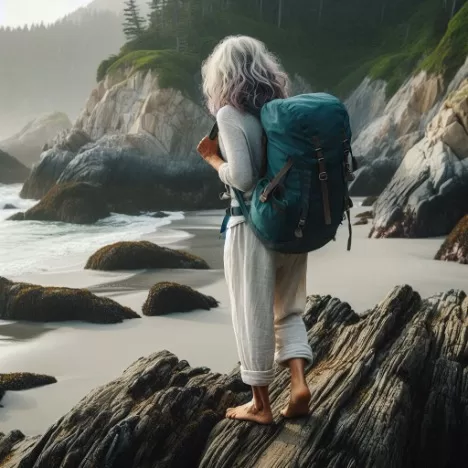
4. Croatia
- Why It’s Great: Known for its stunning Adriatic coastline, Croatia offers a blend of beach relaxation and cultural exploration in cities like Dubrovnik and Split.
- Minimalist Travel Tips: While popular, Croatia can be more expensive than some other European countries. Focus on visiting during the shoulder season to save money and avoid crowds. Minimalist footwear is perfect for exploring ancient city walls and beaches.
5. Greece
- Why It’s Great: Greece combines beautiful islands with a rich history and vibrant culture. From Athens to Santorini, there’s no shortage of exciting places to explore.
- Minimalist Travel Tips: Greece is ideal for island-hopping, and minimalist footwear is perfect for navigating cobblestone streets and beaches. Focus on local ferries and buses for transportation.
6. Slovenia
- Why It’s Great: Often overlooked, Slovenia offers stunning natural beauty, including Lake Bled and the Julian Alps, along with a charming capital city in Ljubljana.
- Minimalist Travel Tips: Slovenia is very environmentally conscious, making it a great fit for minimalist travelers. The country is compact, so you can easily explore without needing a lot of gear.
7. Ireland
- Why It’s Great: Ireland’s lush landscapes, from the Cliffs of Moher to the Wicklow Mountains, make it a hiker’s paradise. The friendly culture and vibrant cities like Dublin add to its charm.
- Minimalist Travel Tips: Ireland’s weather can be unpredictable, so pack layers. However, the country’s small size and efficient public transport make it easy to travel light.
Each of these countries offers a unique blend of culture, nature, and adventure, making them perfect for minimalist backpackers looking to explore Europe with a light heart and a light pack.
Embracing Minimalism Beyond Footwear
The philosophy of minimalist travel extends beyond just footwear choices. By owning less and focusing on experiences rather than possessions, travelers often report a greater sense of freedom and engagement with their surroundings. This approach aligns well with eco-friendly travel practices, as many barefoot shoe brands prioritize sustainable materials and production methods.
Barefoot backpacking in Europe offers a unique blend of health benefits, travel simplicity, and environmental consciousness. By adopting minimalist footwear and packing strategies, travelers can experience Europe in a more connected, comfortable way. As interest in natural movement and sustainable travel grows, barefoot backpacking stands out as a compelling option for those seeking to explore Europe with a lighter step and a deeper connection to the journey itself.
Further Reading and Scientific Studies
- Lieberman, D. E. (2012). What We Can Learn About Running from Barefoot Running: An Evolutionary Medical Perspective. Exercise and Sport Sciences Reviews, 40(2), 63-72.
- Hollander, K., et al. (2017). Growing up (or growing old) barefoot affects foot biomechanics differently in females and males. Scientific Reports, 7(1), 1-9.
- Squadrone, R., & Gallozzi, C. (2009). Biomechanical and physiological comparison of barefoot and two shod conditions in experienced barefoot runners. Journal of Sports Medicine and Physical Fitness, 49(1), 6-13.
- Miller, E. E., et al. (2014). The effect of minimal shoes on arch structure and intrinsic foot muscle strength. Journal of Sport and Health Science, 3(2), 74-85.
- Altman, A. R., & Davis, I. S. (2012). Barefoot running: biomechanics and implications for running injuries. Current Sports Medicine Reports, 11(5), 244-250.
- Chevalier, G., et al. (2012). Earthing: Health Implications of Reconnecting the Human Body to the Earth’s Surface Electrons. Journal of Environmental and Public Health, 2012, 291541.
- Perkins, K. P., et al. (2014). A comparison of barefoot and shod running in children. Journal of Sports Sciences, 32(5), 470-475.
- Franklin, S., et al. (2015). Barefoot vs common footwear: A systematic review of the kinematic, kinetic and muscle activity differences during walking. Gait & Posture, 42(3), 230-239.
- Ridge, S. T., et al. (2013). Foot bone marrow edema after a 10-wk transition to minimalist running shoes. Medicine and Science in Sports and Exercise, 45(7), 1363-1368.
- Tam, N., et al. (2014). Barefoot running: an evaluation of current hypothesis, future research and clinical applications. British Journal of Sports Medicine, 48(5), 349-355.
- Bonacci, J., et al. (2013). Running in a minimalist and lightweight shoe is not the same as running barefoot: a biomechanical study. British Journal of Sports Medicine, 47(6), 387-392.
- Sinclair, J. (2014). Effects of barefoot and barefoot inspired footwear on knee and ankle loading during running. Clinical Biomechanics, 29(4), 395-399.
